Tender or tasteless? Why some families get tattooed to never forget the Shoah
Descendants of Holocaust survivors are voluntarily having Auschwitz tattoos inked on their arms to honour relatives .
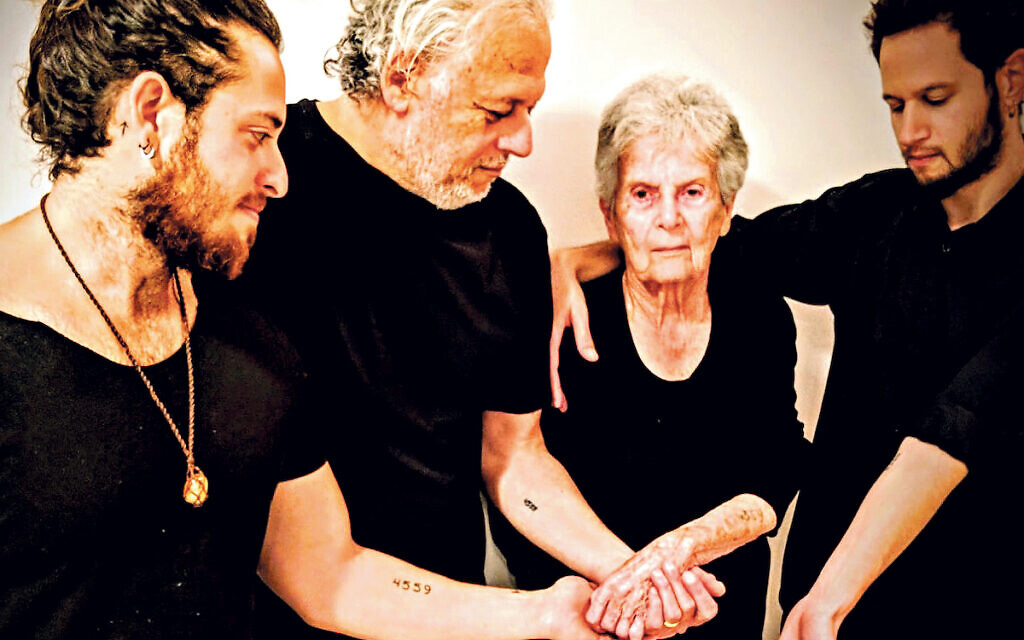
It’s short-sleeve weather at a Toronto café, so the forearms of Pierce Goldman and his younger brother Max are visible. But something on them stops the eye. Small markings in bluish ink; tattoos, on closer examination. A closer look still yields something unnervingly resembling the hastily incised numbers branded on to the arms of inmates of the Auschwitz-Birkenau death camp to mark them as Nazi chattel.
Both Goldman brothers proudly, almost defiantly, wear the same number their maternal grandfather, Schmerel Cynamon, received at Auschwitz on arrival from the Polish city of Lodz: 140856 –Pierce on his left arm, Max on his right. The inked digits are simple yet potent reminders of the brothers’ heritage, and it’s clear both men have given this a lot of thought.
“I did it because I feel what happened to my grandparents was because they were Jewish and nothing else,” explains Max, 40, who owns a plumbing contracting business and got the tattoo in 2018, 30 years after his grandfather died. “Because of this, the tattoo has become an eternal mark or symbol no less important than [the Passover] haroseth or maror. We remember this period vividly every year; the tattoo is an eternal tribute to what can and has happened to us.”
Get The Jewish News Daily Edition by email and never miss our top stories Free Sign Up
Pierce, who’s 43 and owns a guttering company, accepts that his tattoo, which he got in 2019, may not sit well with Holocaust survivors who might feel that there are better ways to honour them, and who naturally associate Auschwitz tattoos with trauma.
“The problem is, if you don’t keep things relevant, they slip into obscurity,” says Pierce. He got the tattoo mostly for his three young children. “It’s hard for them to really understand. It’s so much horror to understand what the extermination of a race means I don’t want to put that on them yet,” he says. “They’ll have the rest of their lives.”
Tattooing was introduced at Auschwitz in November 1941 for Soviet prisoners used as slave labour. The SS began systematically tattooing all incoming Jewish prisoners the following spring, according to the United States Holocaust Memorial Museum’s Encyclopedia of the Holocaust. Auschwitz-Birkenau was the only camp to employ the practice.
More than 400,000 numbers were assigned, but only those prisoners selected for work received them; arrivals sent directly to the gas chambers were not registered or tattooed. For some survivors, the numbers were indelible reminders of hell, a scar to be concealed. Others wore it proudly as a badge of survival.
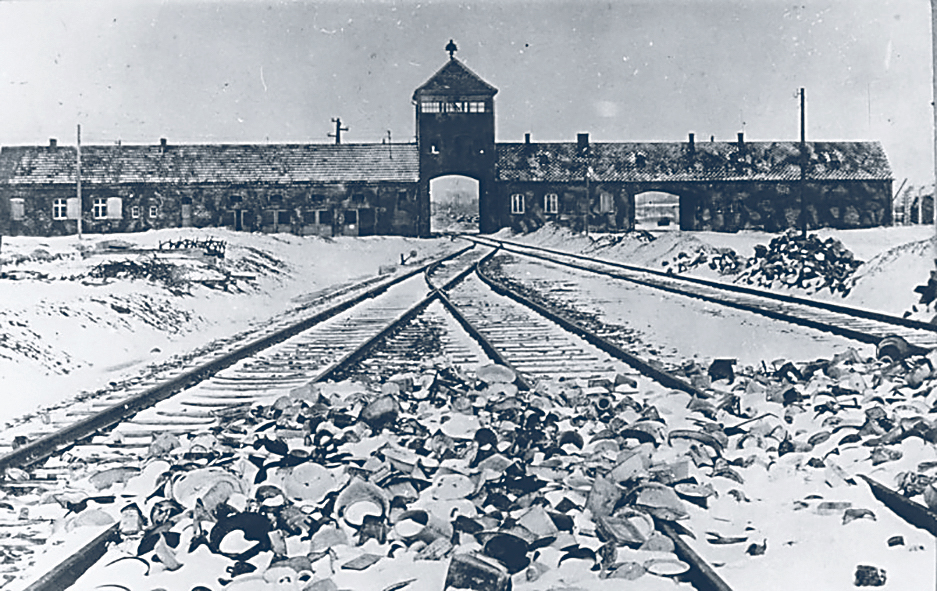
Auschwitz tattoos were spotlighted in the 2012 Israeli documentary Numbered, which followed a middle-aged woman who put her father’s camp number on her ankle after his death, and told the story of a 28-year-old man and his grandfather, who shared the same number on their arms.
The film prompted a front-page article in The New York Times about Israeli-born children and grandchildren of Auschwitz survivors who were tattooing their bodies with the same number that had been branded on their parents and grandparents. Not everyone applauded the practice.
While the motives behind it seemed pure, “one cannot help but wonder at anyone embracing a practice whose purpose was to dehumanise captive Jews”, noted US journalist Jonathan Tobin in Commentary in 2012. “While survivors who lived long enough eventually saw that most considered those numbers to be a badge of honour rather than a mark of shame, the act of fetishising this evidence of the Nazis’ crimes seems like something that said more about the current generation than it does about the experience of the survivors,” Tobin wrote.
He was right, argued the Canadian writer Emma Teitel in a Macleans magazine piece on Numbered. These tattoos are “a provocation. Worse: it’s a talking piece”, Teitel objected. “Imagine the exchange between a survivor’s freshly tattooed grandson and a girl at a party. Girl: ‘Cool tattoo. What is it?’ Guy: ‘Oh it’s my Bubbie’s numbers from Auschwitz. I thought it would be a good way to remember what she went through.’ Girl: ‘Cool. Can I touch it?’”
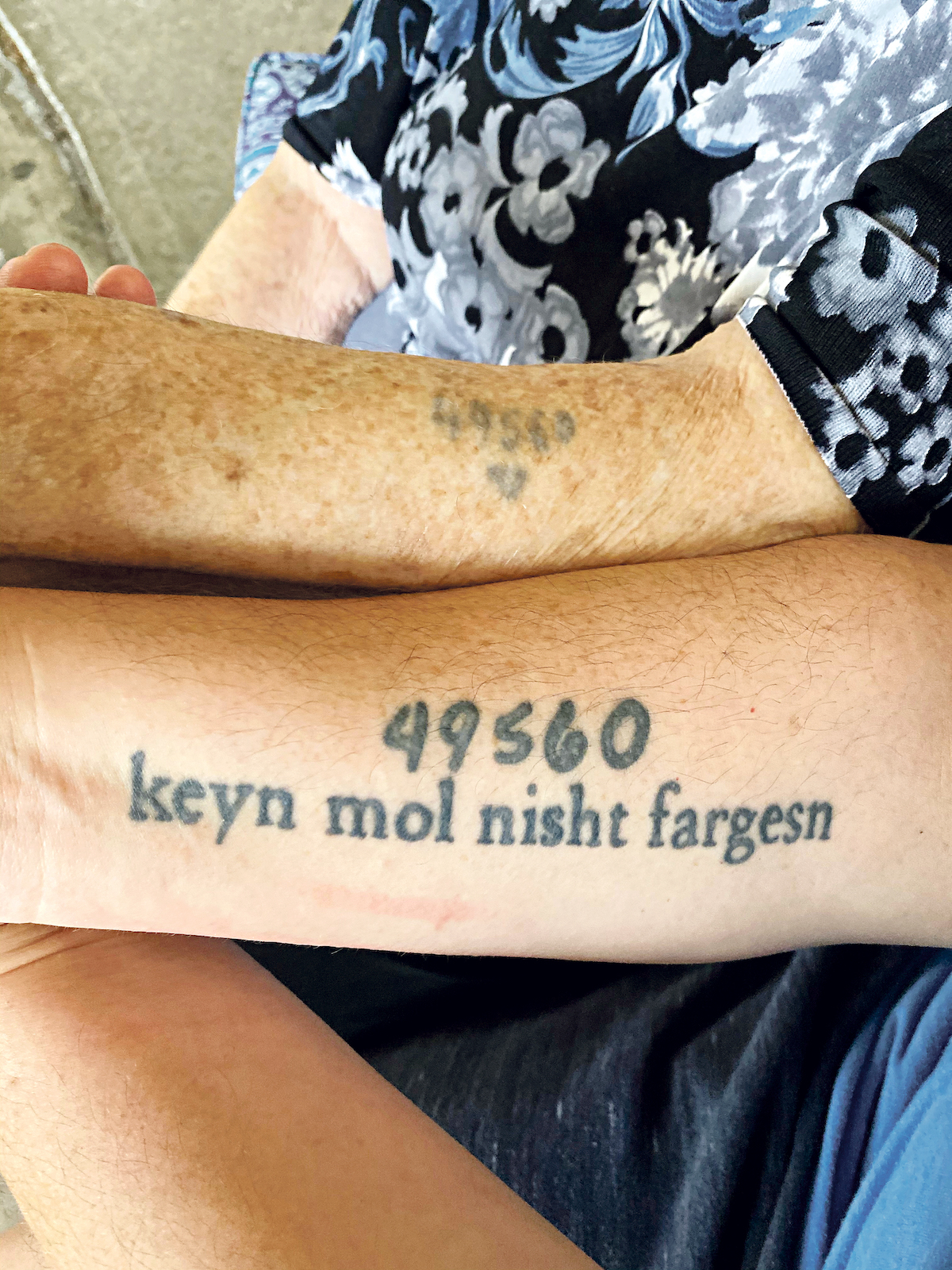
On the other hand, as more and more survivors pass away, “we are moving from lived memory to historical memory”, Michael Berenbaum, a professor at the American Jewish University in Los Angeles who is among the foremost scholars of the memorialisation of the Holocaust, was quoted as telling The New York Times. He called the practice of younger people getting Auschwitz tattoos “a sort of a brazen, in-your-face way of bridging” that transition. Besides, “it sure beats some of the other tattoos young people are drawing on their skin”.
Among Oded Ravek’s loved ones, reproducing an Auschwitz tattoo is a family affair. Ravek, 65, an Ottawa glass artist, wears the number his mother, Livia Ravek, received at the camp on arriving from Slovakia: 4559. Oded’s son, Amir, 30, who lives in Israel, has the same number. So does his daughter, Ariela, 27, an Ottawa student (though in Roman numerals). So does Oded’s nephew in Israel. It’s all the more poignant given that Livia is now aged 95 and lives in Rechovot, Israel.
Oded had the tattoo following an emotional visit to the site of Auschwitz with his parents about eight years ago. “Whatever we read about Auschwitz-Birkenau, it’s no comparison to when you walk with your mum and dad in those places. You’re living a nightmare [of] what they went through.” After that, he says, “I couldn’t think of a better way to remember what happened, and to honour my mother.”
He recalls unveiling the numbers, etched by a “disbelieving” tattoo artist in Israel, to his mother. It was a Friday night, and he had just brought her flowers for Shabbat. “It was a mixed bag. It was a shock,” he recalls. “She thought I was crazy. But I explained to her why I did it. We hugged and cried a bit, and that was it.”
Now, those who notice the tattoo on his inner left forearm have two reactions: “Either they think I did the right thing or I’m insane.”
Meanwhile, the next book from Heather Morris, author of the bestselling historical novel The Tattooist of Auschwitz, is titled Three Sisters, and traces the wartime exploits of Livia Ravek and her sisters Cibi and Magda. As with the Goldman brothers, two Toronto women received Holocaust-era tattoos simply to be intimately, eternally bound to their survivor forebears.
Marsha Shelson-Zweig, who lives in Richmond Hill, has the tattooed number A-15697 and the Hebrew words “Remember Never Again” on the back of her neck to pay tribute to her grandmother, Helen Schwartz, a Polish survivor of Auschwitz and Bergen-Belsen who died three years ago aged 93. The markings are easy to conceal with her long hair.
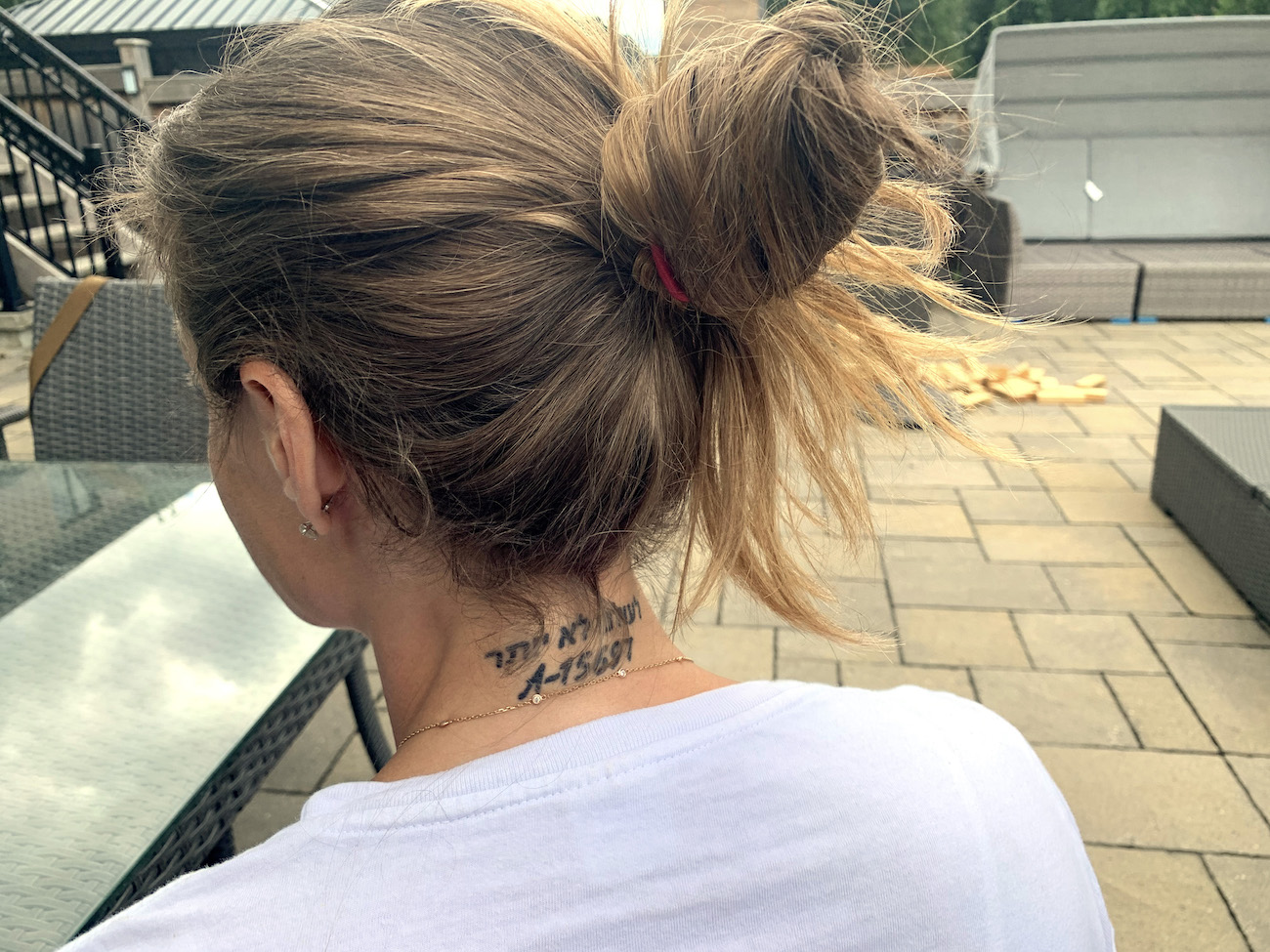
“It was to honour her,” says Shelson-Zweig, who’s 42 and is a general manager of an electrical company. “The Holocaust and what she went through gave her drive. She loved everybody. She didn’t want any race, any person to go through what she did. She spoke about the war, all over, all the time. That was her passion, to tell her story. It gave her purpose, to make the world a better place, to stop hate, and bring back the love and acceptance of everyone.”
“When she saw it, she cried. She said it was beautiful.
Mostly, reaction has been positive, Shelson-Zweig said, though she understands why some would not see it that way. Her own mother was initially against it. “When she saw it, she cried,” Shelson-Zweig recalls. “She said it was beautiful.”
It’s much the same for Galya Hoffer, a 55-year-old Toronto mother of three who got the sequence A-14100 and a butterfly tattooed on her left shoulder blade in tribute to her late grandmother, Regina Langer.
“I was very close to my grandmother. She raised me for the first four years of my life,” Hoffer says. “She was like my mother. I always wanted to go to Poland with her but she passed away before I could. This was a way to remember my grandmother, on me, on my body, so she’s always part of me, and I just carry her with me.
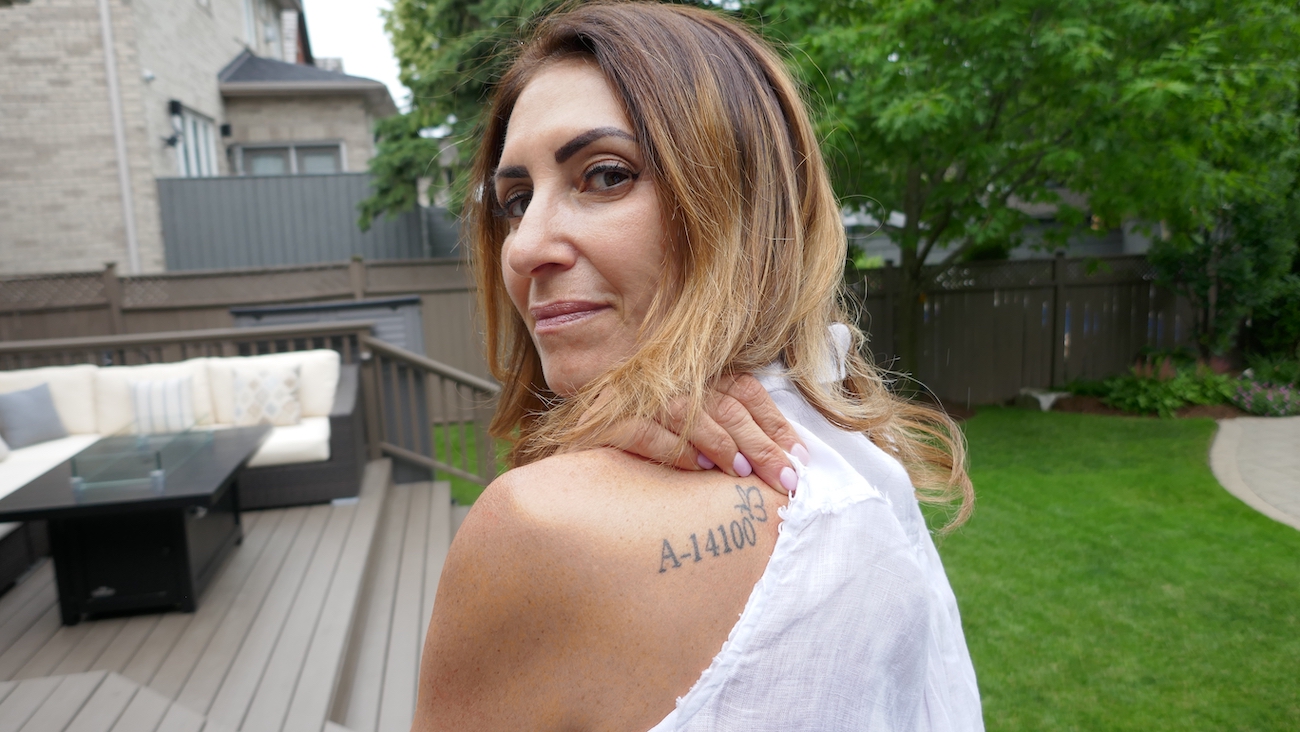
“Everybody absolutely loves it,” she adds. “They say it’s a wonderful thing. I’ve never had any negative feedback.” Her grandmother would be “elated – she always talked about the Holocaust. She would have just smiled and said, ‘Good for you.’”
The Goldman brothers recall that their grandfather, who died in 1988, hated his tattoo – he “carried it with trauma”, Max said – and probably would not have approved of his grandsons’ actions. But before the Holocaust, “I’m sure many Jews couldn’t believe what happened before it ensued,” Max offers. “Let my grandfather’s mark remind us all where we were a short time ago.” He feels that if his grandfather could see his descendants’ tattoos now, “he would understand the need”.
While she agrees tattooing is forbidden by Jewish law because of its connection to ancient pagan practices, Rabba Rachel Kohl Finegold, director of education and spiritual enrichment at Montreal’s Congregation Shaar Hashomayim, believes that the idea of “embodying our memories” is very Jewish.
“As Jews, we remember not only with our minds, but also with our bodies, whether we are eating matzah on Passover or lighting candles on Chanukah, we make our collective memories more concretised by involving the body,” she says. “We even immerse our entire bodies with Jewish ritual when we are surrounded by the walls of a succah or the waters of a mikveh. These may not be permanent markings, but they are certainly ways in which we physically experience our Jewish narrative or collective memory.”
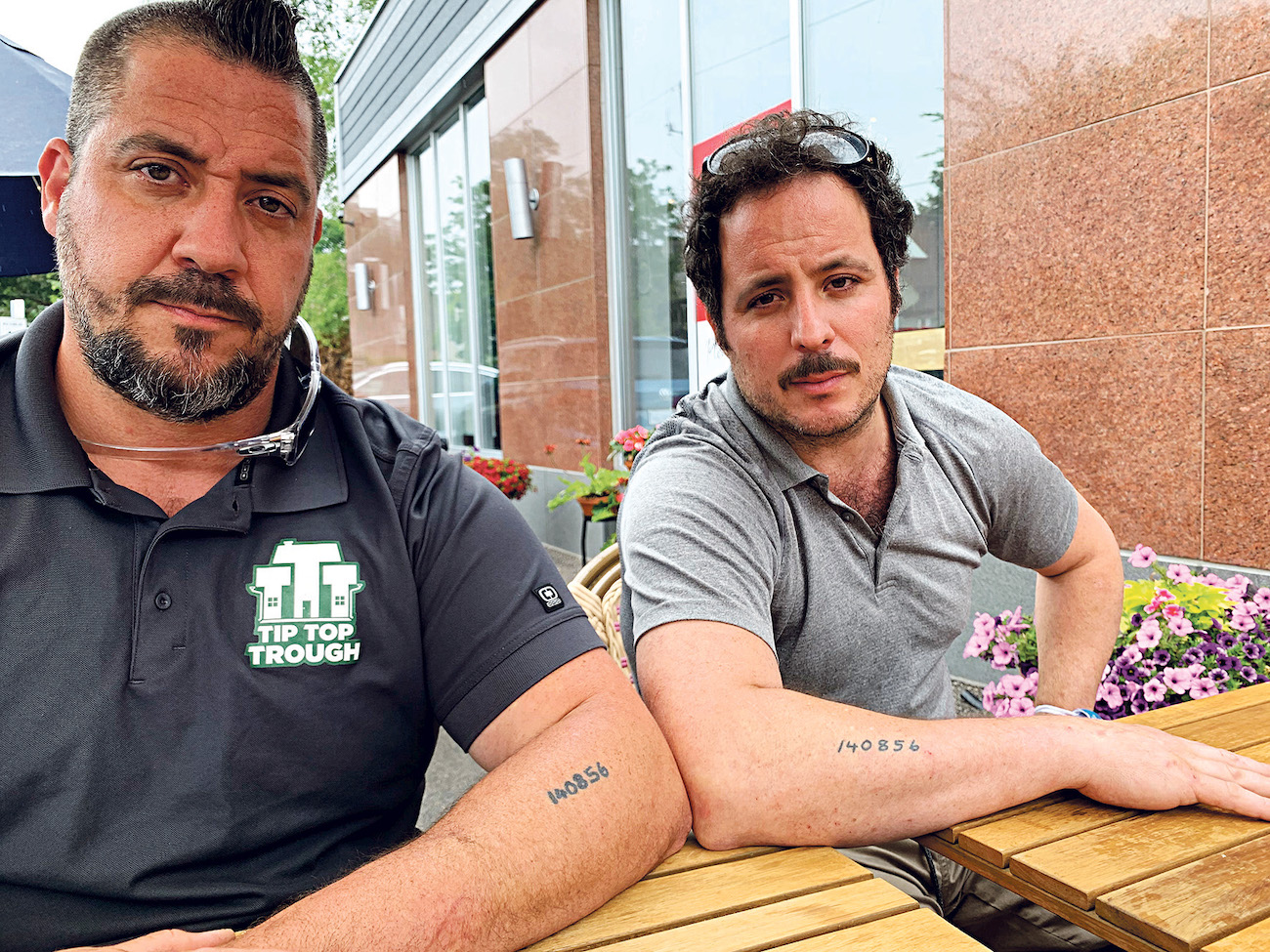
Finegold feels that even those whose survivor grandparents did not have numbers on their arms – this includes her –“bear the responsibility of their scars and their experiences”. She adds: “Perhaps we can find a plethora of ways to express their memories in our bodies.”
Others believe historical context is key. When Leviticus was written, tattooing was largely a pagan practice, done to mark slaves or to show devotion to a deity, Marshal Klaven, then a US rabbinical student, said in a 2008 interview. Since tattooing has evolved, he thought the rule may be outdated.
The Bible has both positive and negative references to markings on the body, pointed out a Canadian rabbi, Lawrence Englander, rabbi emeritus at Solel Congregation, a Reform synagogue in Mississauga, Ontario. The passage in Leviticus and the “mark of Cain” in Genesis are negative, but a positive one is seen in the book of Ezekiel, where it appears that prophets were marked with the Hebrew letter tav on their foreheads to distinguish them.
Rabbi Englander concedes that in Jewish law, tattoos have been frowned on as a desecration of the body. However, views can change. For example, he notes, ear piercing by men is now considered routine, and is supported by a biblical precedent: in Exodus, Aaron removes earrings from both women and men to fashion the Golden Calf.
As for replicating Auschwitz numbers on one’s arm, he says: “I find that somewhat bizarre, but I’m not one to judge how they wish to honour their survivor relatives. At the very least, it would be decent for them to ask permission of the survivor before copying their number.”
Nate Leipciger, from Toronto, instantly recalls his own Auschwitz number, 133628, and the date he got it, 1 August 1943. Over the decades, he considered having it removed but did not. “To me, it was a sign of life,” he reasons. “It meant hope. It meant all the positive aspects of life.” That’s because the only inmates who received tattoos had a chance to live. “So it was a gift of life. Once you had the number, you had the chance to survive.”
He has no problem with survivors’ descendants receiving matching tattoos. “It’s a method of remembering, not only that they had grandparents who were survivors, but also commemorating them,” Leipciger simply says. “I don’t think there’s anything wrong with it.”
• This feature is republished courtesy of the Canadian Jewish News.

Thank you for helping to make Jewish News the leading source of news and opinion for the UK Jewish community. Today we're asking for your invaluable help to continue putting our community first in everything we do.
For as little as £5 a month you can help sustain the vital work we do in celebrating and standing up for Jewish life in Britain.
Jewish News holds our community together and keeps us connected. Like a synagogue, it’s where people turn to feel part of something bigger. It also proudly shows the rest of Britain the vibrancy and rich culture of modern Jewish life.
You can make a quick and easy one-off or monthly contribution of £5, £10, £20 or any other sum you’re comfortable with.
100% of your donation will help us continue celebrating our community, in all its dynamic diversity...
Engaging
Being a community platform means so much more than producing a newspaper and website. One of our proudest roles is media partnering with our invaluable charities to amplify the outstanding work they do to help us all.
Celebrating
There’s no shortage of oys in the world but Jewish News takes every opportunity to celebrate the joys too, through projects like Night of Heroes, 40 Under 40 and other compelling countdowns that make the community kvell with pride.
Pioneering
In the first collaboration between media outlets from different faiths, Jewish News worked with British Muslim TV and Church Times to produce a list of young activists leading the way on interfaith understanding.
Campaigning
Royal Mail issued a stamp honouring Holocaust hero Sir Nicholas Winton after a Jewish News campaign attracted more than 100,000 backers. Jewish Newsalso produces special editions of the paper highlighting pressing issues including mental health and Holocaust remembrance.
Easy access
In an age when news is readily accessible, Jewish News provides high-quality content free online and offline, removing any financial barriers to connecting people.
Voice of our community to wider society
The Jewish News team regularly appears on TV, radio and on the pages of the national press to comment on stories about the Jewish community. Easy access to the paper on the streets of London also means Jewish News provides an invaluable window into the community for the country at large.
We hope you agree all this is worth preserving.
-
By Brigit Grant
-
By Laurent Vaughan - Senior Associate (Bishop & Sewell Solicitors)
-
By Laurent Vaughan - Senior Associate (Bishop & Sewell Solicitors)
-
By Laurent Vaughan - Senior Associate (Bishop & Sewell Solicitors)
-
By Laurent Vaughan - Senior Associate (Bishop & Sewell Solicitors)





















